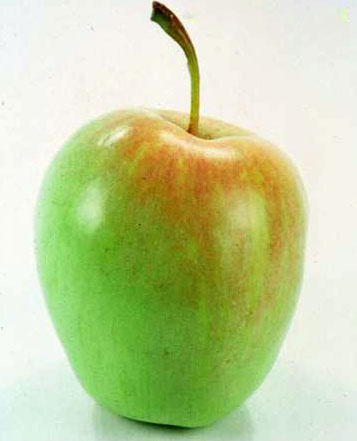
ALVIN JOHNSON looks at Biblical references to the ‘tappuach’ or apple…
The tappuach is mentioned five times in the Old Testament and three of the references come from the Song of Solomon. The tappuach is the apple tree (Malus domestica). This is a deciduous tree which grows from around two to five metres in height, although in the wild it can be up to 12 metres. The fruit matures in late summer and early autumn.
The earliest records of the apple being grown for its fruit in the Middle East, are from ancient Egypt around the 13th century BC.

Malus domestica ‘Anna’ (the Anna apple). PICTURE: Public domain.
There have been two species of apple that have been developed in Israel in recent years, one of them is the Malus domestica ‘Anna’ (the Anna apple). However, according to Michael Zohary it may have been the Malus sylvestria that was found in Israel in Biblical times.
Before discussing the references to the tappuach in the Old Testament, it needs to be pointed out that, contrary to popular belief, the fruit that Adam and Eve ate was not the apple. Rather they ate the fruit from the tree of the knowledge of good and evil.
Old Testament references, meanwhile, include that in Song of Solomon 2: 3–5:
Like a tappuach (apple) tree among the trees of the forest
is my lover among the young men.
I delight to sit in his shade,
and his fruit is sweet to my taste.
He has taken me to the banquet hall,
and his banner over me is love.
Strengthen me with raisins,
refresh me with apples,
for I am faint with love.
His left arm is under my head,
and his right arm embraces me.”
The apple is also mentioned in in Song of Solomon 7:8 – “May … the fragrance of your breath like tappuach (apples), and your mouth like the best wine” – and 8:5 – “Under the tappuach [apple] tree I roused you; there your mother conceived you, there she who was in labour gave you birth.”
Today Jews eat an apple dipped in honey for their New Year celebrations, called in Hebrew Rosh Hashanah. They do this for a number of reasons, but one has a connection with this verse. The message of love in connection with the apple tree and its use on Rosh Hashanah, is to be a reminder to them of God’s love for his people.
The prophet Joel refers to a drought which causes the tappuach to dry up, this is meant to be a call to repentance.
“Despair, you farmers,
wail, you vine growers;
grieve for the wheat and the barley,
because the harvest of the field is destroyed.
The vine is dried up
and the fig tree is withered;
the pomegranate, the palm and the tappuach [apple] tree –
all the trees of the field—are dried up.
Surely the joy of mankind
is withered away.
Put on sackcloth, O priests, and mourn;
wail, you who minister before the altar.
Come, spend the night in sackcloth,
you who minister before my God;
for the grain offerings and drink offerings
are withheld from the house of your God.
Declare a holy fast;
call a sacred assembly.”
– Joel 1:12
In Proverbs 25:11, we find mention as well: “A word aptly spoken is like tappuach [apples] of gold in settings of silver.”
This is an edited excerpt from Alvin Johnson’s iBook ‘Biblical Flora’, 2017. The book is available for free download on iTunes. A teacher’s edition is also available for purchase.





